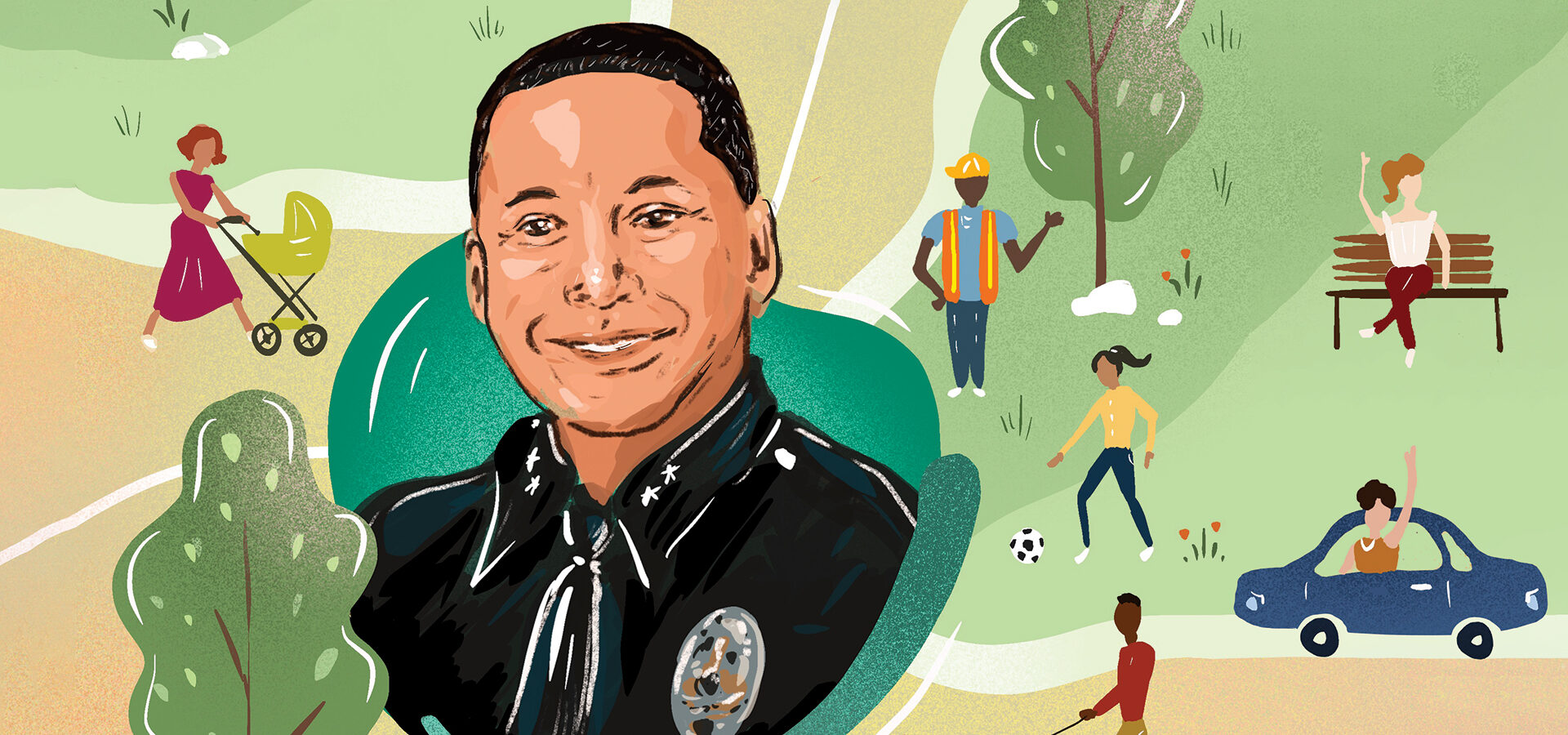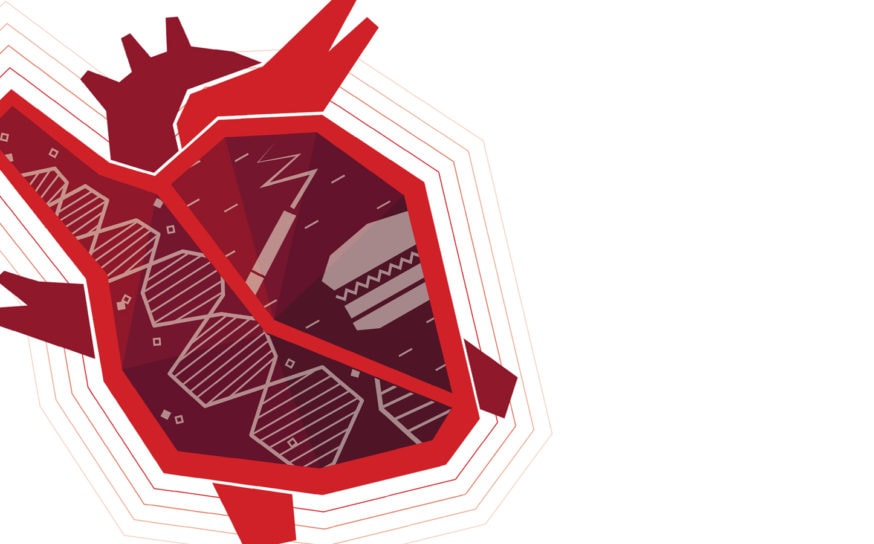
Head of LAPD’s Valley Bureau Alan Hamilton Updates Us on Local Crime
Top cop talks shop.
-
CategoryPeople
-
Illustrated byYuiko Sugino
When it comes to the LAPD’s Valley Bureau, the buck stops with Deputy Chief Alan Hamilton, a guy who, after more than 30 years with the force, believes that being a police officer is “one of the most rewarding careers you can have.” He’s worked in nearly every one of LAPD’s divisions, from patrol to vice. He has also worked as a detective. As a captain, he worked with the Topanga Patrol Division. He was later promoted to commander and transferred to serve as assistant commanding officer of operations for the Valley Bureau in 2018. Promoted to deputy chief in 2021, he now heads the Valley Bureau.
Here Chief Hamilton talks to VB editor Linda Grasso, giving her an overview of crime in the Valley—from tips on safe parking to avoiding conflict on the roads.
 In terms of crime overall, how are we doing in the Valley?
In terms of crime overall, how are we doing in the Valley?
Well, we’re actually seeing decreases in crime this year. It could be weather-related—all the rain we’ve had—but we’re working hard on areas with violent crime and trying to get guns used in crimes and narcotics off the street.
How do police go about confiscating guns used in crimes? What is that process?
Everything from regular investigative stops to traffic stops to the follow-up on investigations involving homicides, serious assaults and robberies. We also have informants that tell us where guns are. And we have undercover officers who buy guns. We come across guns through the course of our everyday activities.
What are the areas of the Valley where you see the most crimes?
I would say we see a mix of violent and property-oriented crime in the North Hills, Sun Valley and Reseda areas.
What about the murder rate in the Valley? How does that compare to previous years?
We had 67 homicides in the San Fernando Valley in 2022. That was an increase from 2021 of approximately 15%. This year we’re doing much better. Some of it probably has to do with the weather. Right now, with 14 homicides in the Valley so far in 2023, we’re down about 20%.
What are the most common crimes in the Valley?
Probably breaking into a car and removing items. Most often we see this in multi-unit dwellings when there are lots of vehicles around with easy access.
If you live in a complex like that, or say you are at a mall in underground parking, what kind of precautions can you take?
Park in a well-lit area near a camera if you can. This is particularly important if it is nighttime. If there is security on the property, park near that. You don’t want to be parked in areas with blind spots or places where you are hidden from view.
Many residents are concerned about dangerous encounters with homeless people. Give us some guidance here with regard to safety.
You should act with caution at all times. Be aware of your surroundings at all times. Homeless people are not more dangerous just because they’re unhoused. The ones who are involved in criminal activity are just as dangerous as someone who is involved in criminal activity that’s not homeless. They’re dangerous regardless. What we do find, though, is that a lot of the people who are homeless are afflicted with two high-risk factors: mental health and substance-abuse issues. You should always use caution when you encounter those populations.
Another thing I constantly hear about is people having deliveries stolen from their doorstep, mailbox, or driveway. Residents often catch these thieves on tape with security cameras. What do you suggest here?
If you have criminal activity on tape, give it to police. You can go online at lapdonline.org, our community online reporting system, and submit it. We retain that kind of video because that is a theft.
I’m assuming people should not expect police to try to track down the thief when you share video—right?
Yes, correct. But that absolutely can occur though. We’ve found videos helpful in solving some investigations.
What other crimes should we be heads-up about?
The San Fernando Valley is the worldwide capital of road rages. You see them not just on freeways but on surface streets. Suggestion: When you start to get angry with another motorist, make a right turn and get the hell away from the other party. And just cool your jets. Nothing is going to be gained from a confrontation—ever.
What has the anti-police movement and the decrease in the force been like for you and your officers?
I tell them that as long as they remain professional and forthright, they will be fine. We’ve been put in a position where we have decreased resources. No organization is going to go from 10,000 officers down to just over 9,000 and not be affected. In the Valley, we are 240 officers short of our normal force. And that is about average; it is no more short than the other bureaus in the city.
Why exactly are we 240 short on the Valley force?
It’s a combination of factors. We’ve had a large number of retirements or people who are retirement-eligible age. There are some people who have opted go to other agencies or departments. Others have moved out of state, feeling it is a better living situation for their families.
Do you guys feel pinched to cover all the demands of the job?
We’re managing it now, but if the numbers dwindle much more, we’re going to be in the locker pretty quick.
What kind of people are you looking for to fill those open slots? What makes a good police officer?
The most important thing we look for is integrity, because your word is your bond with the community. If we fail, then we immediately have a problem. So character is the linchpin upon which everything else is built. We are also looking for people who are willing to work long hours and who will try to come up with solutions for community members. It can be a really rewarding career. Where else can you go to help people and be that person who is a shining light in the darkness?











